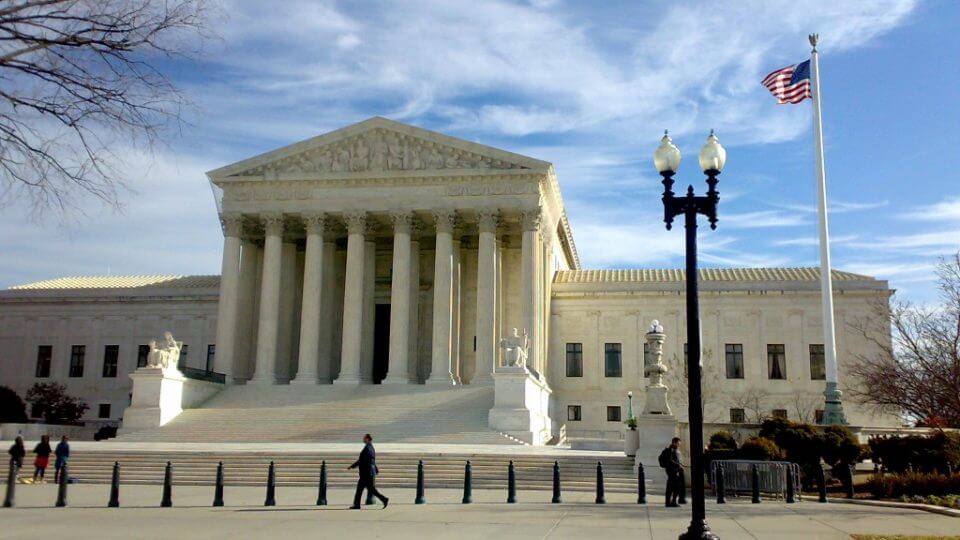In a 5-4 decision handed down today (Clapper v. Amnesty Int’l USA, No. 11-1025, U.S. S.Ct. February 26, 2013), the Supreme Court ruled that lawyers, human rights and media organizations concerned their communications with their overseas clients may be subject to unlawful surveillance under the FISA Amendments Act have no standing to challenge the constitutionality of the law. The majority opinion, written by Justice Alito, and joined by Justices Kennedy, Roberts, Scalia and Thomas finds that the harm respondents articulated is too speculative, because their calls may not be intercepted, and, therefore, the threatened injury may not be “certainly impending.” As to the speculative nature of the harm, the court found the theory of harm was based on a “highly attenuated chain of possibilities, including whether such surveillance will be sought generally, whether it will be sought under FAA authority (rather than some other authority), whether the FISA Court would approve the minimization and targeting procedures used by the government to execute such surveillance, whether the government will capture the communications of the respondents’ clients, and whether the respondents’ communications will be captured by the surveillance.”
The dissent found this chain of events to be less attenuated. Using what he described in sophisticated legal terminology as “common sense,” Justice Breyer found there to be a “very high likelihood” that the government will use FAA authority to intercept some communications about which the respondents were concerned. He then analyzed other cases where the Supreme Court has found standing, and concluded the harm in this case was far more likely than in some prior decisions where the court had found standing.
The majority also rejected Amnesty International’s fallback position – that it has standing because of the costs of the measures it has taken since Congress passed the FAA to try to avoid interception of its communications. As to this point, the court found that incurring these costs does not create standing because respondents cannot “manufacture standing merely by inflicting harm on themselves based on their fears of hypothetical future harm that is not certainly impending.”
What are the key takeaways from this decision? I think there are three key points.
First, the court’s standing analysis, and especially its focus on “certainly impending harm,” will likely be cited on many occasions to defeat claims by parties who have not yet been harmed by a particular action but who spend time, money and effort in an effort to avert such harm. Those plaintiffs will likely find themselves forced between waiting to see if the harm occurs, and being unable to recover the costs expended to prevent it unless the harm was virtually certain to occur.
Second, given this decision and the secrecy surrounding the government’s use of the FAA, it is unlikely that any person subject to surveillance will ever have standing to challenge the constitutionality of the FAA process. The only parties with standing to mount a challenge to the constitutionality of the FAA are the internet service providers and telephone companies that must assist the government in deploying surveillance. Those parties, and those parties alone, are in a position to challenge such surveillance when ordered, as opposed to when the fruits of it are ever sought to be used in a criminal proceeding. See In re Directives Pursuant to Section 105B of Foreign Intelligence Surveillance Act, 551 F.3d 1004, 1006-1016 (2008) (holding provider had standing and that directives are constitutional).
Third, if the Court had reached the merits, its view of the constitutionality of the FAA Directives would likely have turned on the Court’s perception of the role of the Foreign Intelligence Surveillance Court (FISC) in approving the government’s targeting and minimization procedures that accompany using Directives. The majority seemed to think the FISC review was a meaningful part of the FAA process by indicating its conclusion on the standing question was influenced by the fact that any presumption that surveillance would occur would require the court to speculate that the FISC would approve such surveillance if requested (as if such review had not already occurred). The dissent pointed out that the government rarely receives any sort of disapproval or even modification when appearing before the FISC. In doing so, the dissent stated it thought it likely that the FISC would approve the government’s procedures, especially given the narrow scope of its allowed review. The oddest thing about this debate is that both the majority and dissent speak about the FISC review in the future tense, because it likely had not happened when the lawsuit was initiated. By the time of this decision, however, it should have been reasonably clear (although likely classified) whether the FISC has approved the government’s targeting and minimization procedures for FAA directives.


